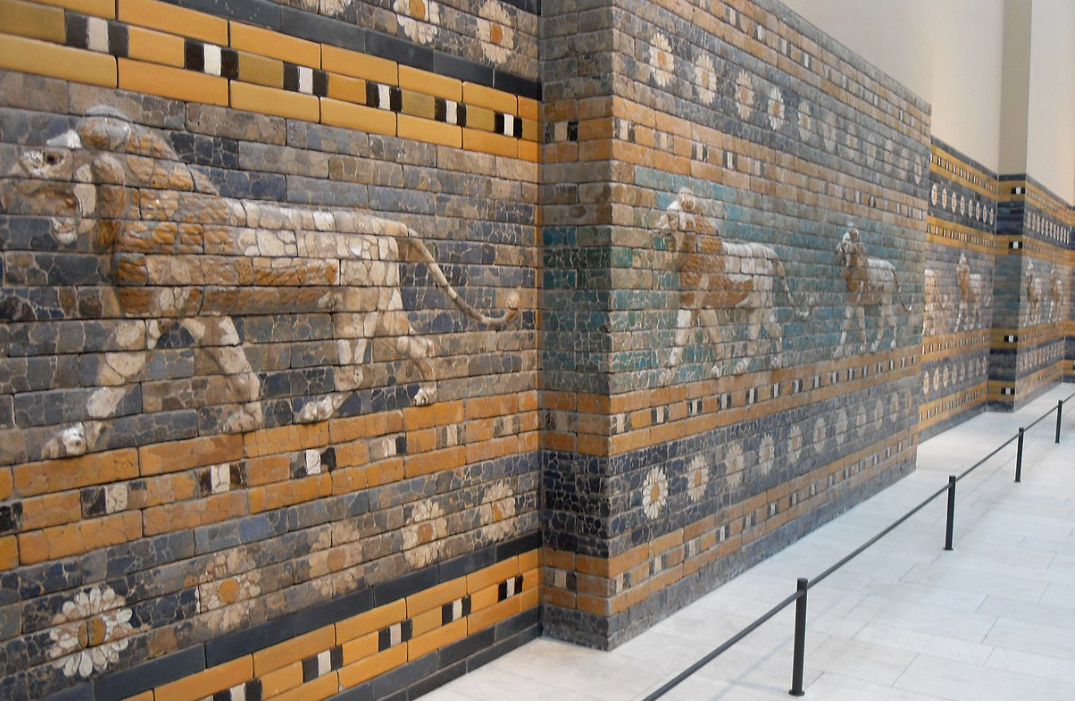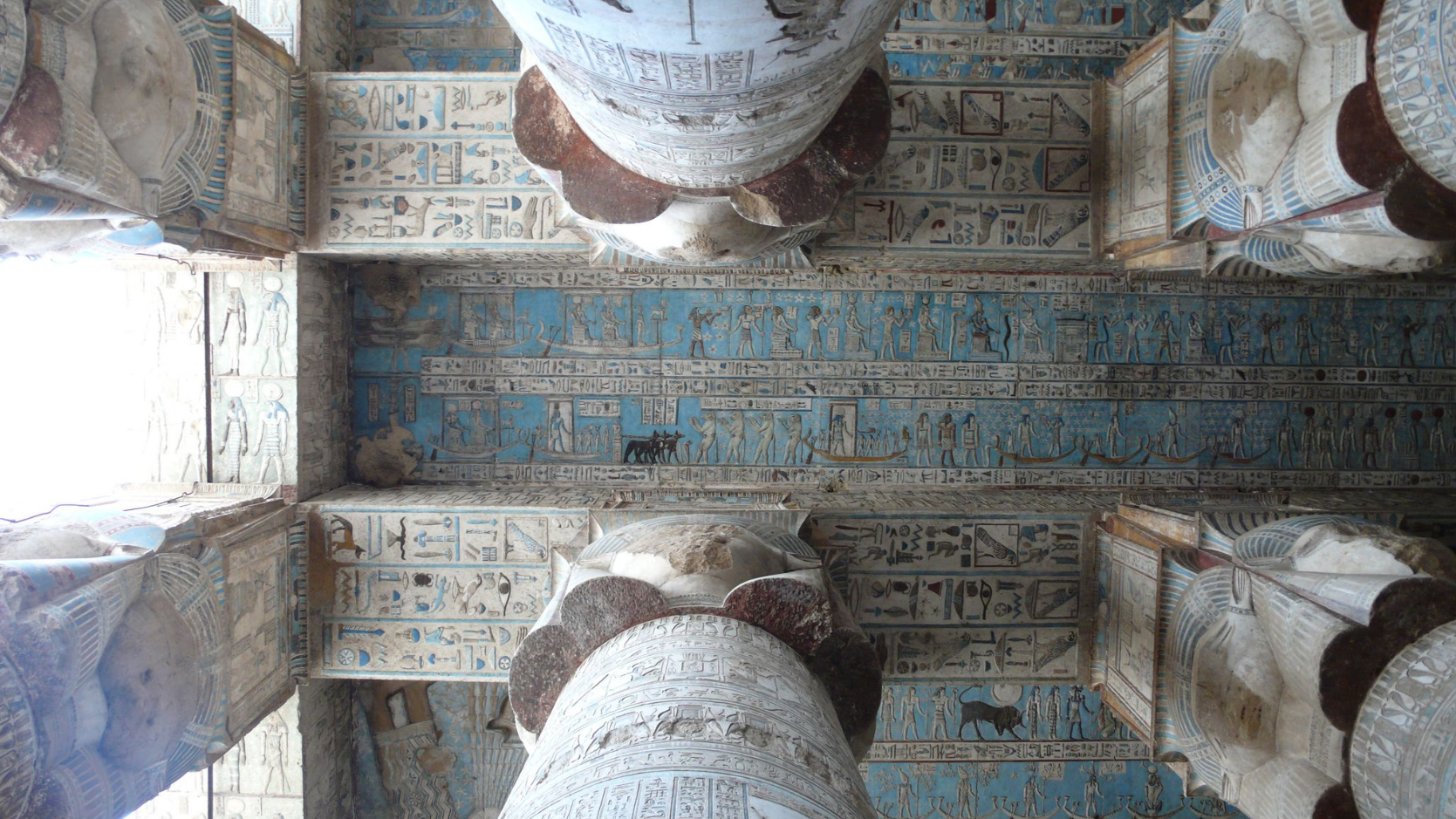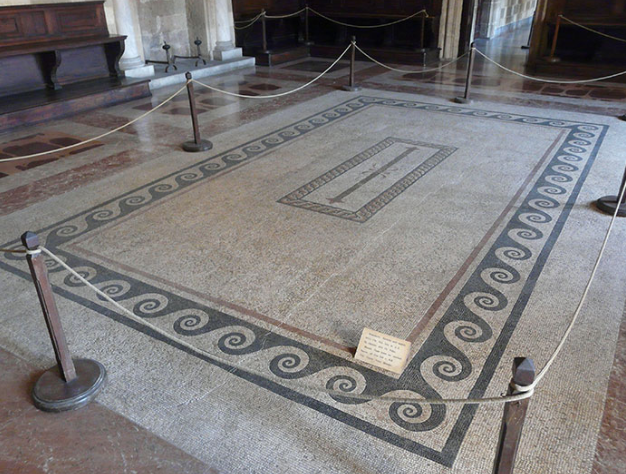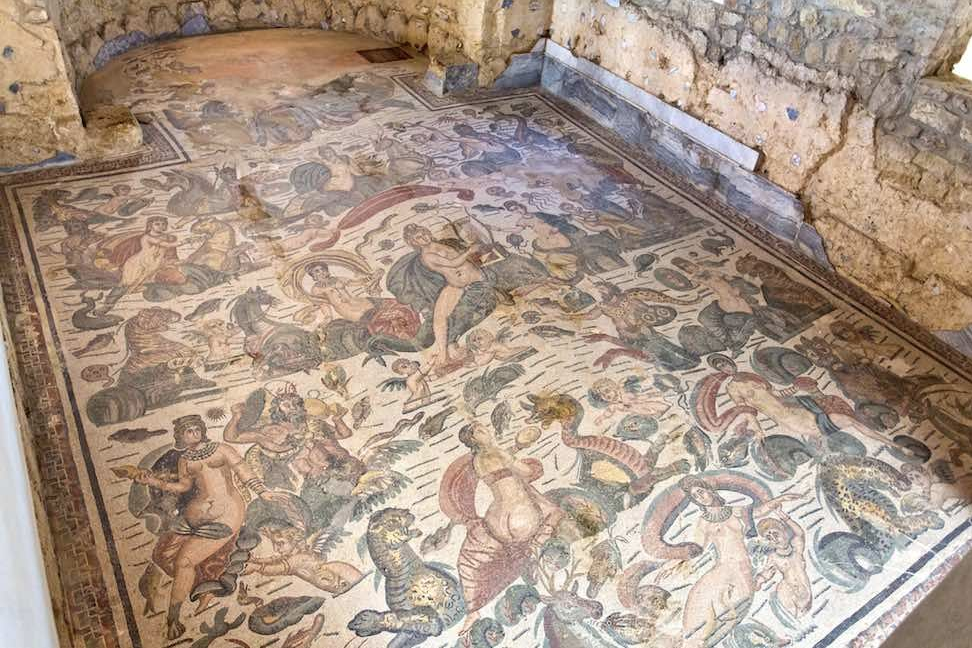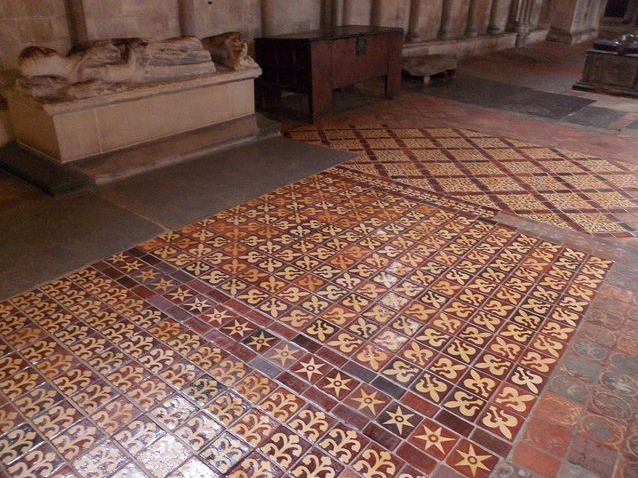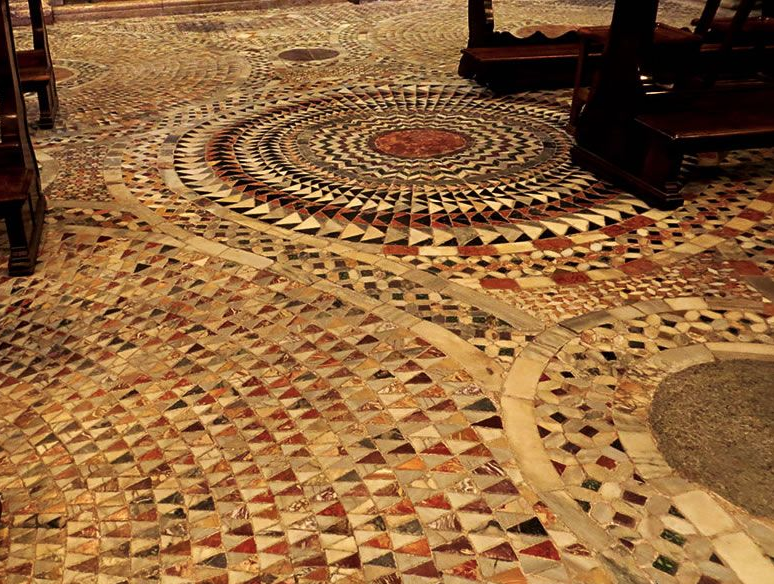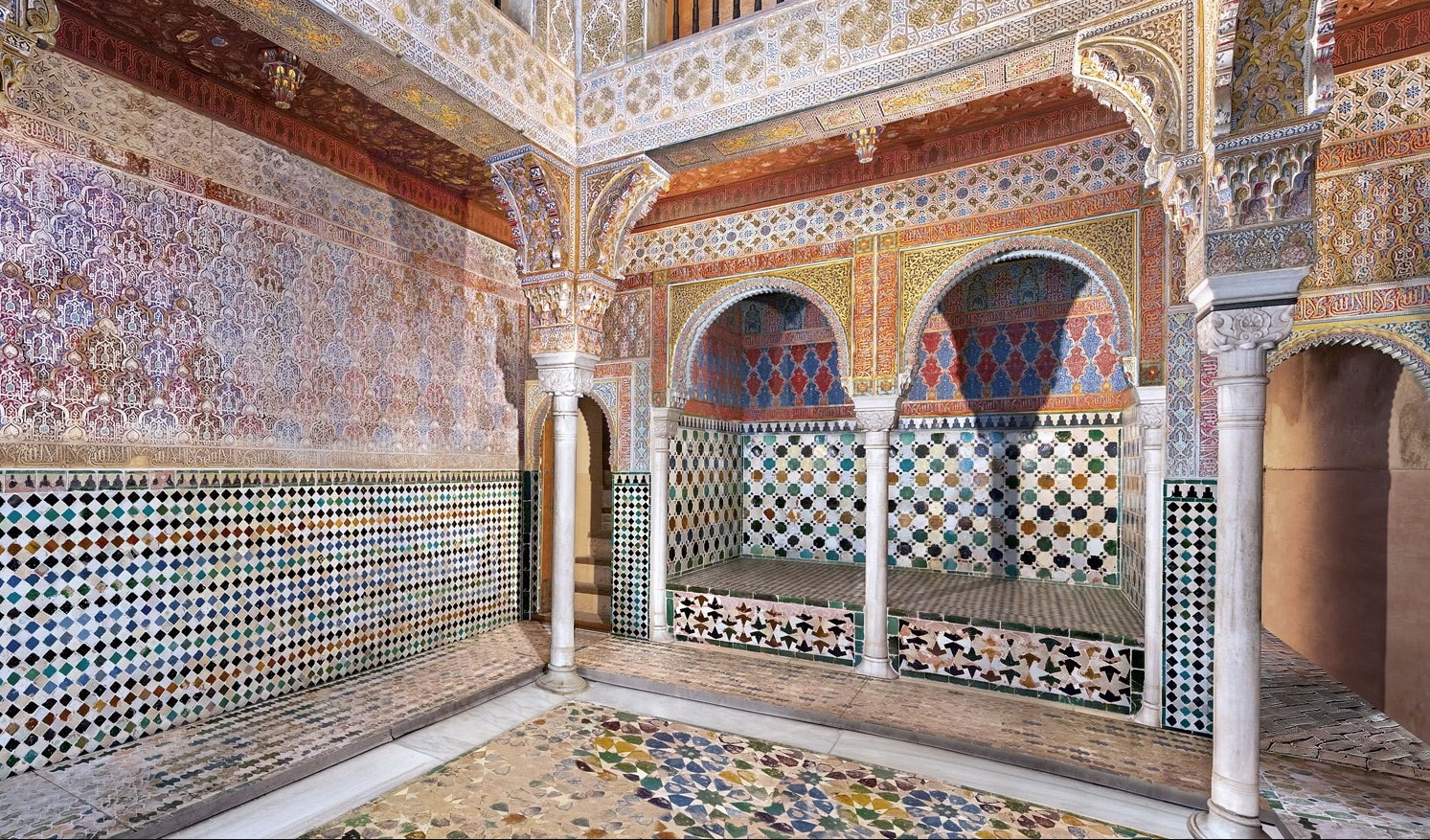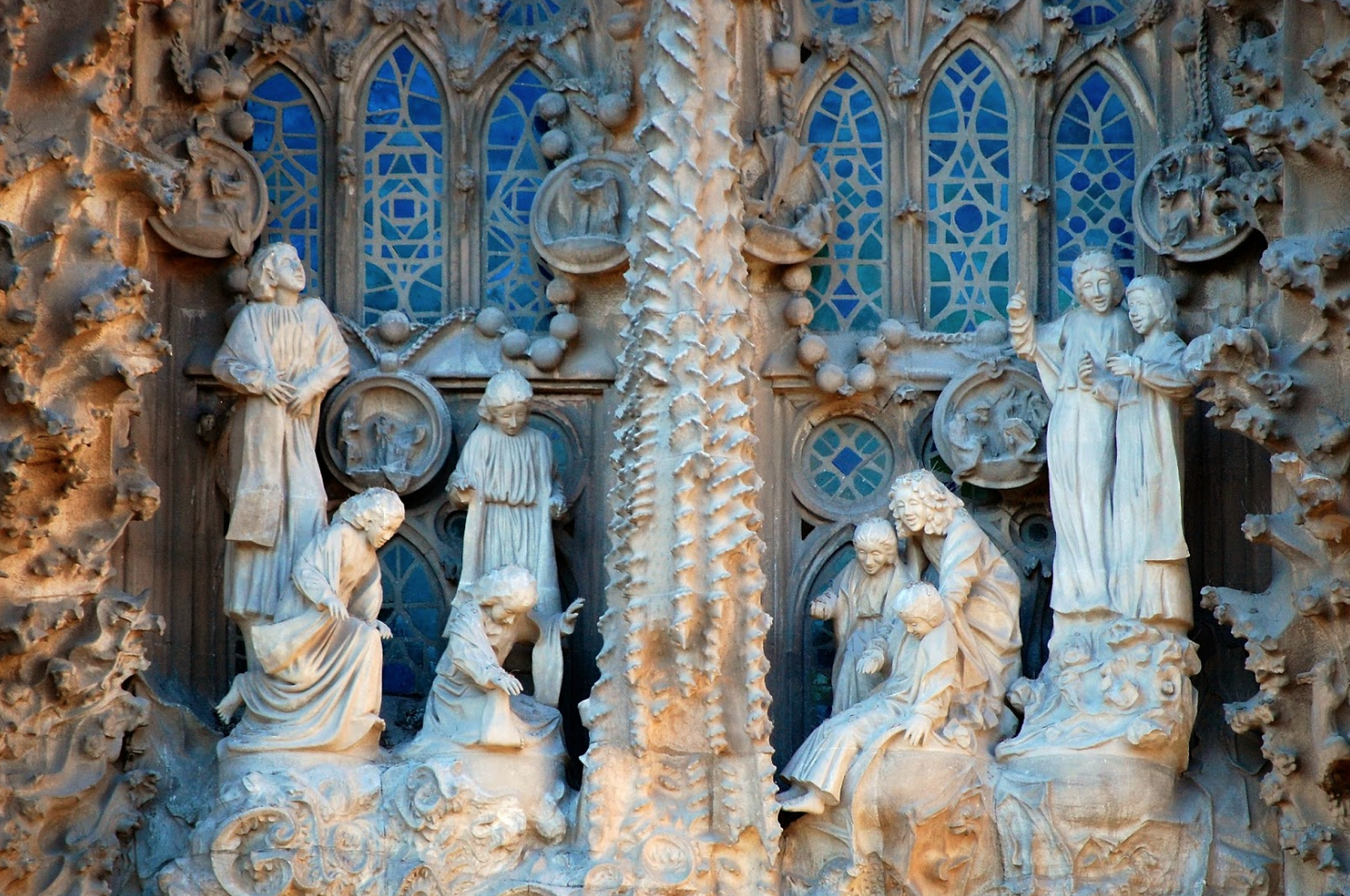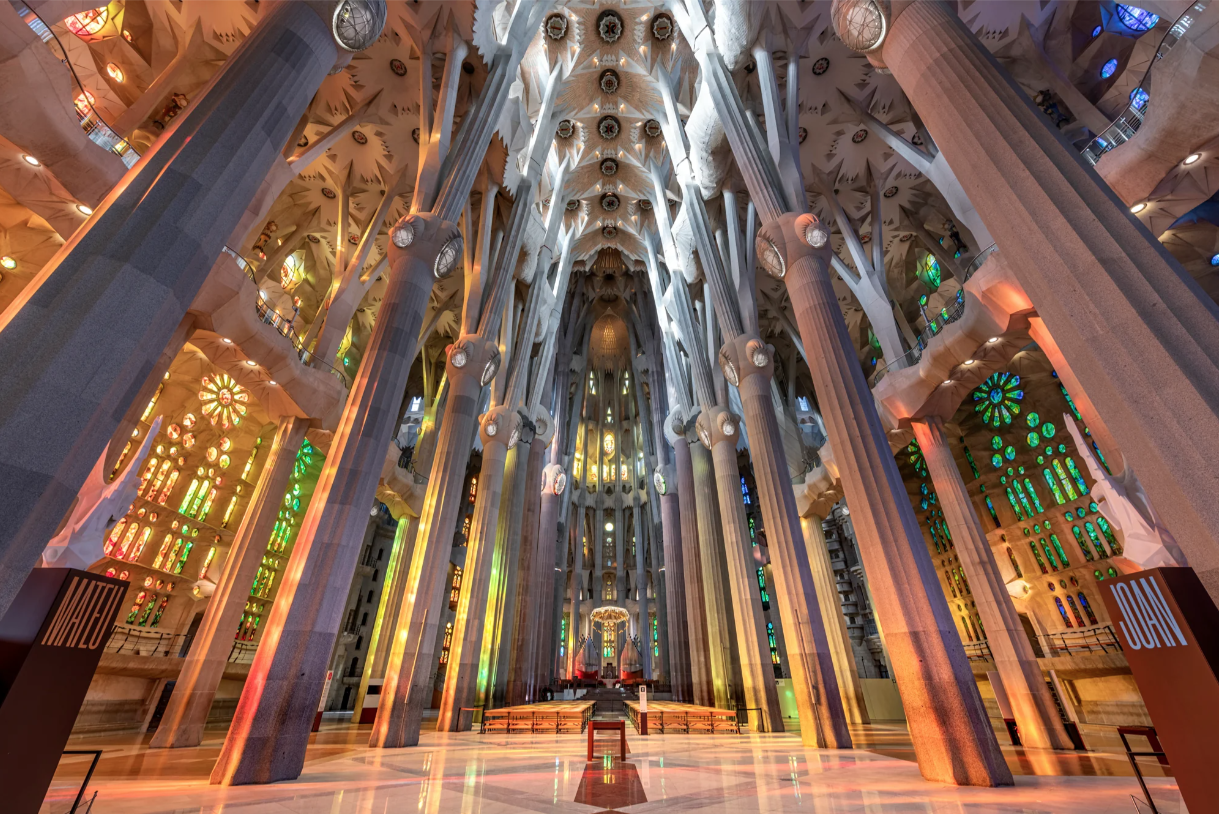A brief history of tile from ancient to modern times
The history of tile spans for thousands of years, with some of the earliest examples found in ancient Egypt and Mesopotamia around 4,000 BC. The oldest known glazed tiles date back around 4,700 years in Egypt during the reign of Pharaoh Sneferu. These early civilizations used tiles for decorative purposes in their architecture.
Ancient times
Mesopotamia
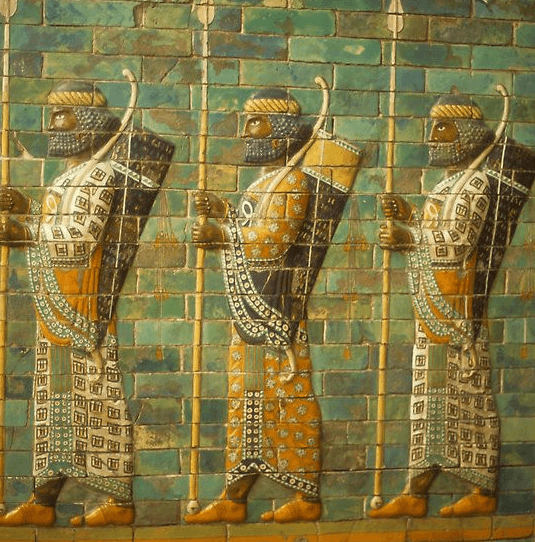
In the cradle of civilization, Mesopotamia (or Babylon, nowadays Irak) birthed tiles with dual purposes. Crafted from clay, these tiles weren’t just stunning; they depicted vibrant tales of daily life and religious beliefs. Imagine walking on floors that whisper the stories of the ancients.
💡Did you know?
- Mesopotamians were pioneers in tile-making techniques, using molds and kilns to create intricate designs.
- The Babylonians utilized glazed bricks for their Ishtar Gate, showcasing vibrant blue tiles depicting animals and deities.
Landmark: Ishtar Gate (Babylon, Mesopotamia). The Ishtar Gate, constructed in ancient Babylon during the reign of King Nebuchadnezzar II, is one of the most iconic examples of Mesopotamian tile artistry. Its vibrant blue glazed bricks adorned with images of dragons, bulls, and other mythological creatures showcased the intricate tile craftsmanship of the time.
Egypt
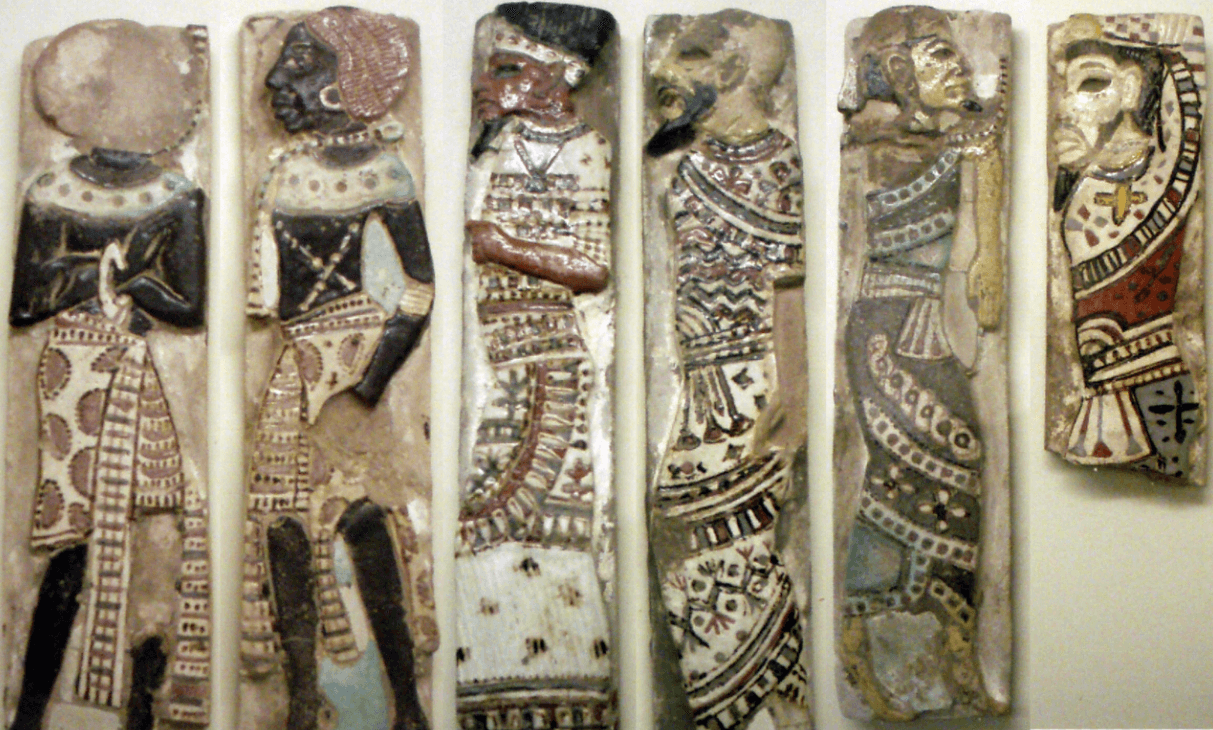
In the land of pharaohs and pyramids, tiles weren’t just for decoration; they were storytellers. Crafted from clay, these tiles adorned the walls and floors of temples and tombs, narrating captivating stories of mythology and religious beliefs.
💡Did you know?
- Egyptians utilized a technique called ‘faience’ to create glazed tiles with intricate colors and designs.
- Ancient Egyptians were among the first to use tile adhesives made from gypsum and lime.
Landmark: Dendera Temple Complex (Qena, Egypt). The Dendera Zodiac, found within the Temple of Hathor, stands as a testament to the exceptional craftsmanship of ancient Egyptian artisans. This ceiling depicts celestial bodies and astrological symbols through crafted tiles, reflecting the profound astronomical knowledge of ancient Egypt.
Greece
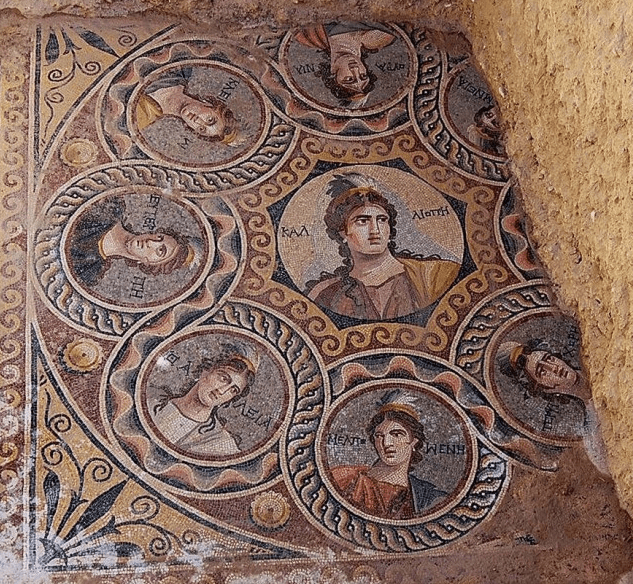
The Greeks elevated tiles to an art form. Marble and terracotta weren’t just materials; they were turned into masterpieces adorning homes with vibrant depictions of mythical tales and everyday life.
💡Did you know?
- Greek artisans often used pebbles or small pieces of colored stone to create intricate mosaic patterns.
- They employed simple tools like hammers, chisels, and trowels for tile cutting and installation.
Landmark: The Palace of the Grand Master of the Knights of Rhodes. Within Rhodes’ medieval town, the Palace of the Grand Master showcases the Knights of St. John’s legacy. Its ancient tiled floors, reveal splendid designs echoing tales of chivalry and myth. These remnants offer glimpses into the grandeur of knights’ artistic legacy.
Roman Empire
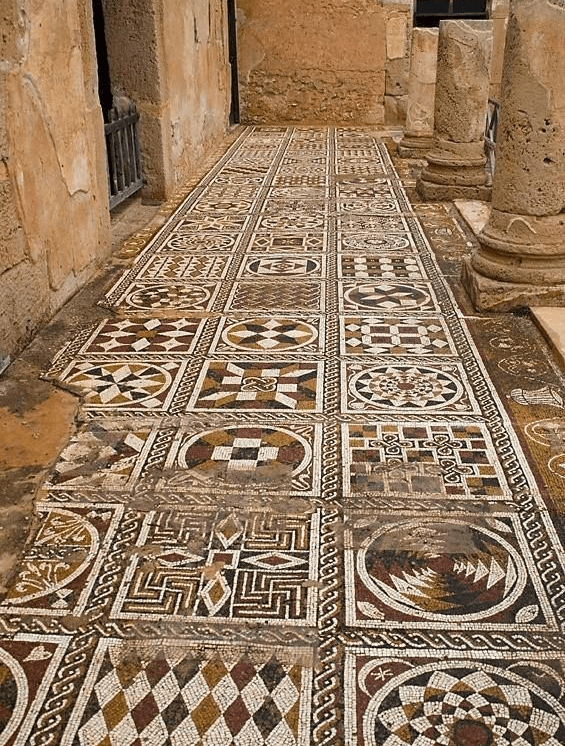
Following the Greeks, the Romans mastered tiles too. Their villas and public spaces became canvases for intricate mosaics, vividly depicting tales from their rich history and daily life.
💡Did You Know?
- Romans perfected the use of thinset mortar, a cementitious adhesive, for laying tiles.
- Tools like the ‘tesserae’ (small cubes of stone or glass) and ‘toreumata’ (tools for cutting and shaping tiles) were extensively used.
Landmark:Villa Romana del Casale (Sicily, Italy). This Roman villa showcases an extensive collection of remarkably preserved floor mosaics. The villa’s rooms exhibit intricate mosaic tiles portraying scenes from Roman daily life.
Middle Ages
Europe's Reverence
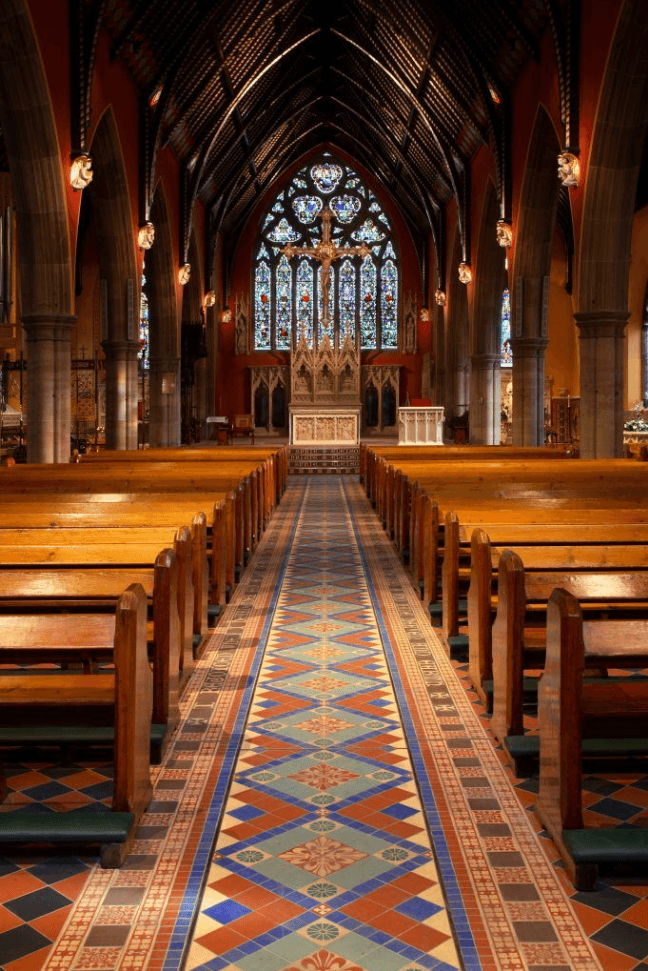
Medieval Europe saw churches and castles adorned with tales. Stone or marble tiles became more than mere floors; they were canvases that whispered religious stories and legends.
💡Did You Know?
- The Gothic period saw the use of encaustic tiles, decorated with colored clays, for stunning floors.
- Monasteries played a crucial role in preserving and advancing tile-making techniques during this era.
- The Silk Road facilitated the exchange of tile-making techniques between different cultures, influencing artistic styles globally.
- The Moorish influence brought vibrant, geometric tile patterns known as “Zellige” to Europe during the Medieval era.
Famous examples of tile legacy
Winchester Cathedral (Winchester, England)
This medieval cathedral showcases remarkable tile work in its floors. Winchester Cathedral features a 13th-century tiled pavement known as the “Mortuary Chests Pavement,” composed of decorative encaustic tiles.
St. Mark's Basilica (Venice, Italy)
St. Mark’s Basilica, constructed during the Middle Ages, displays an awe-inspiring interior adorned with exquisite mosaics and intricate marble floor tiles. The basilica’s floors incorporate a beautiful series of geometric and decorative designs.
Alhambra (Granada, Spain)
The Alhambra, a medieval Islamic palace and fortress complex, is renowned for its breathtaking tile work, displaying intricate “Zellige” patterns. These vibrant designs are a testimony of tile craftsmanship of the Islamic world during the Middle Ages.
Modern Era
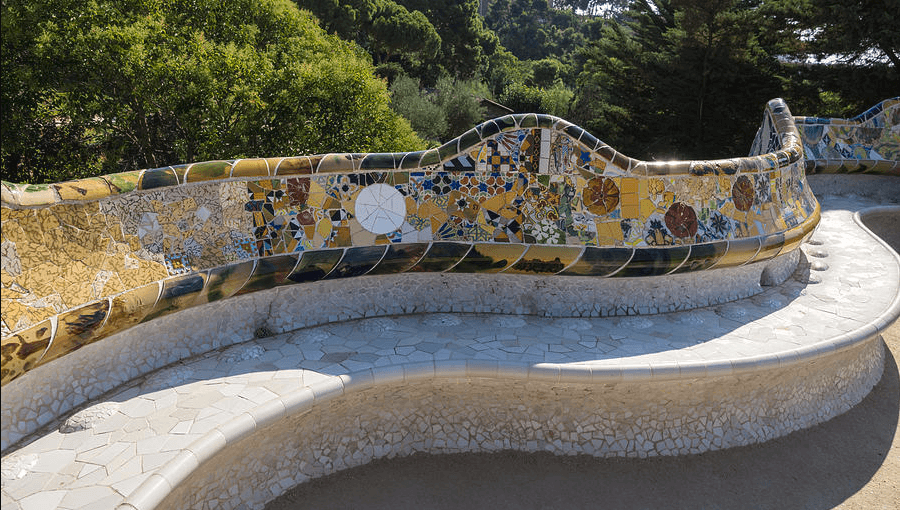
In the modern age, from industrial revolutions to digital innovations, tiles evolved, adorning homes with contemporary elegance.
💡Did You Know?
- Advancements in ceramic manufacturing in the 20th century led to mass-produced, affordable tiles for everyday use.
- Innovations like porcelain tiles, made under high pressure and heat, made tiles more durable and versatile.
Landmark : Sagrada Família in Barcelona, Spain. Designed by the famed architect Antoni Gaudí, the Sagrada Família is an ongoing architectural masterpiece that blends Gothic and Art Nouveau styles.
The Nativity Facade, one of the basilica’s most ornate sections, features vibrant and detailed tile mosaics. These mosaic tiles, known as trencadís, are made from broken ceramic pieces.
Gaudí’s original plans for the Sagrada Família didn’t emphasize ceramic tile use. However, the incorporation of trencadís has become an iconic aspect of this modern architectural wonder.
The Age of Innovation in Tile Production
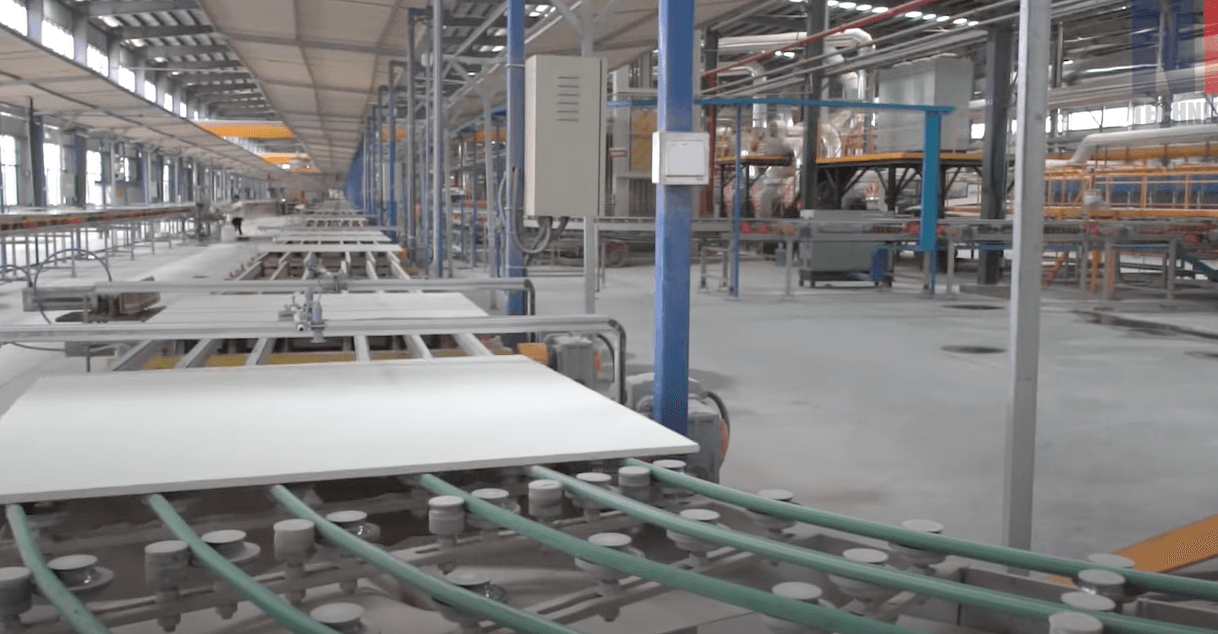
Technology revolutionized tiles. Digital printing turned them into artistic marvels, allowing custom designs and intricate details that were once unimaginable.
💡Did You Know?
- Laser cutting technology has revolutionized tile shapes and designs, allowing for precise and intricate patterns.
- Thin tiles called “slim tiles” or “thin porcelain tiles” have gained popularity due to their lightweight, durable nature.
Glimpses into the Future
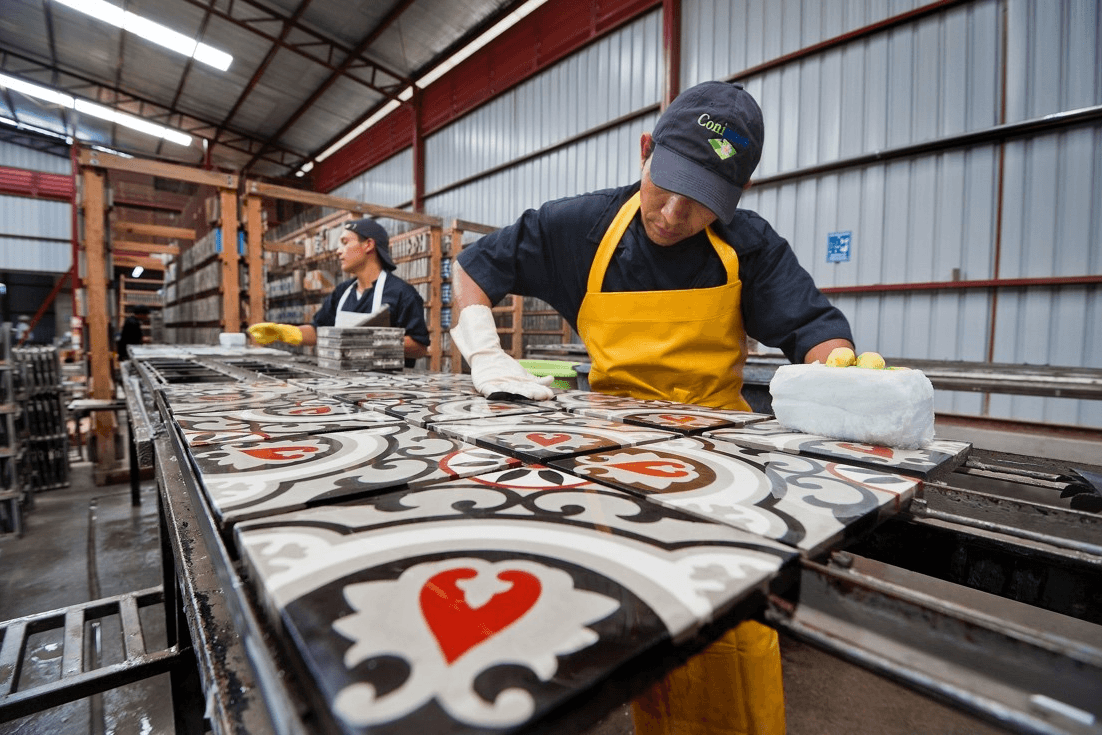
Tomorrow’s tiles are eco-warriors. Made from recycled materials and embracing futuristic tech, they are not just stylish but environmentally conscious.
💡Did You Know?
- Solar tiles, capable of harnessing solar energy, are becoming a trend in sustainable architecture.
- 3D printing is making its way into tile production, allowing for highly customizable and intricate designs.

Conclusion
The history of tile took us from ancient whispers to future aspirations of human innovation. Tile journey isn’t just about aesthetics; it’s about paving the way for a sustainable and stylish future, one tile at a time.
